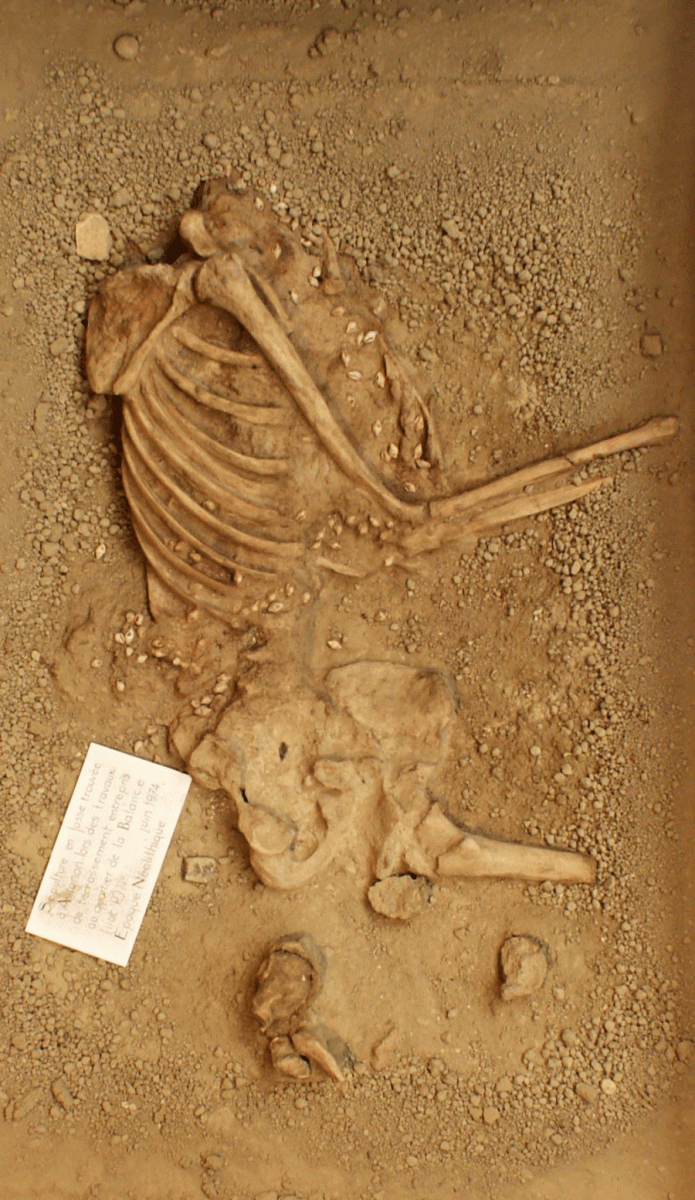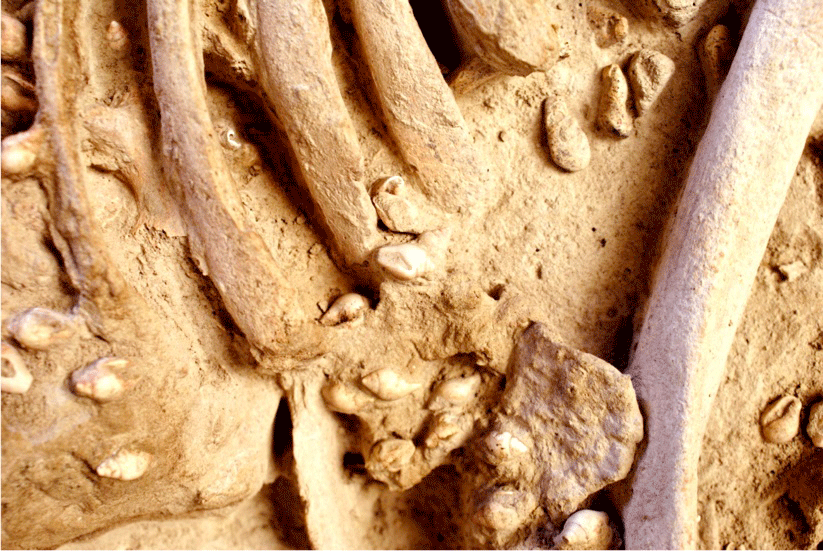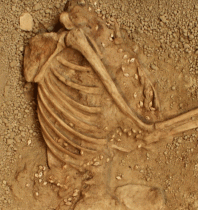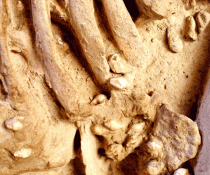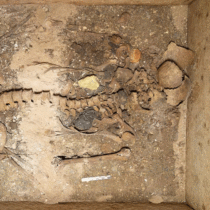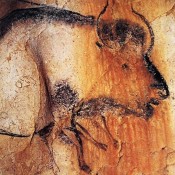Archaeologists have identified a burial garment from a Stone Age grave after new analyses have been carried out on a finding discovered in the 1970s.
The grave of La Balance-Ilot P was initially identified in the 1970s during an excavation in Avignon, southern France. It was partially unearthed and then exhibited and stored at the Calvet Museum. In 2009 it was rediscovered and researchers were able to identify the burial garment with the use of 3D laser recording and field anthropological methods.
The body was buried in 4950-4800 BCE, in primary position, and it belonged to an adult man. Laboratory analyses have established that the man’s burial garment was decorated with sea shells and the teeth of red deer. The garment was probably a jacket or tunic. Although the cloth has decayed, the shells remain as they were originally arranged around the body. The shells are conical, 158 in number and of the species Columbella rustica. They are arranged in patterns on the garment, pointing up, pointing down, or alternating in pairs. The red deer teeth are 16 in number, canine teeth, and were probably sewn at chest level. According to chemical analyses the shells could have been painted red.
Although a reconstruction of the garment was performed by researchers, the skull, hands and legs of the body are not saved, probably due to later construction and digging at the site.
The study was published in the Journal of Field Archaeology.
